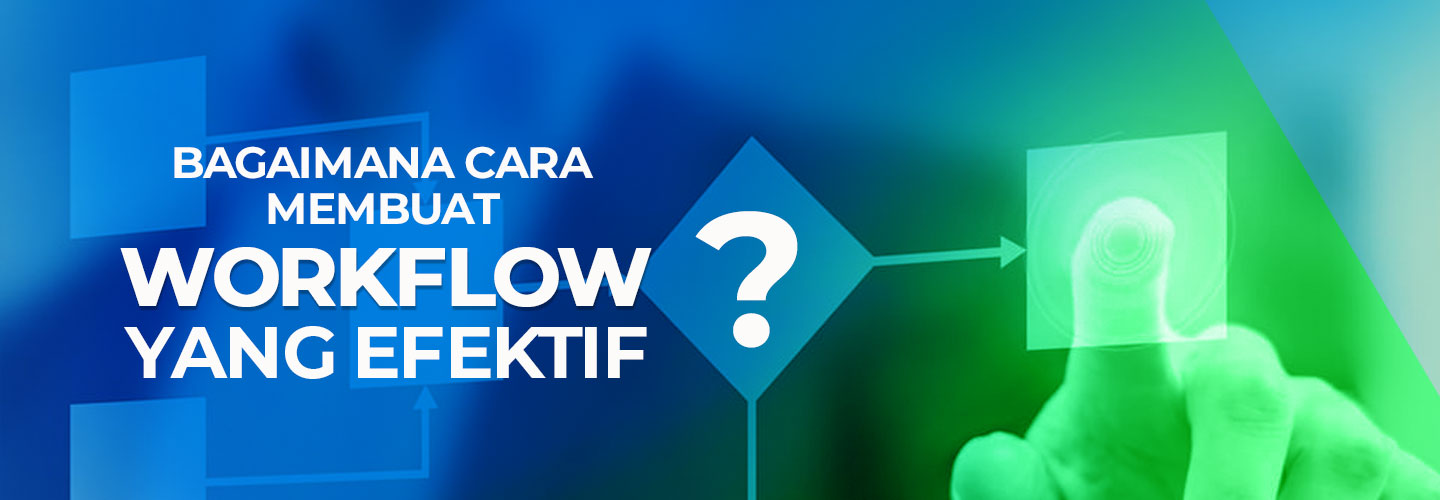How to Create an Effective Workflow in Operational Processes

An operational process consists of a series of business stages that are interrelated to one another. Several repetitive processes allow a company to make efficiency in carrying out operational tasks.
In practice, workflows can be mutually agreed upon through the use of supporting tools or software. If done well, every agile managerial level can create effective collaboration with its team and employees.
What are Workflows?
Workflow is an end-to-end process that helps teams achieve goals by connecting the right people at the right time. Workflows move data through a series of steps from initiation to completion. Once set up, workflows help you organize information in ways that are not only understandable.
Someone can take advantage of a workflow to develop their own projects. However, workflows are best utilized for teams and departments because there is a sequence of steps that need to be completed. By their nature, workflows minimize inefficiencies by providing the clarity the team needs to achieve their goals.
You can build effective workflows for time-based initiatives with clear goals. This leads to content calendars in marketing campaigns, employee onboarding programs, and procurement processes which are repetitive jobs.
How to Create an Effective Workflow
Organizing workflows means agreeing to work as an iterative process so you don't have to start from scratch. To be effective, workflows must be created in a system that can be understood together to track information in real time. Here's how to create an effective workflow in operational activities.
1. Gather ideas and information
Every job starts with an idea, whether it's been done or something completely new. In this first stage, collect all the random information and brainstorm ideas. Also consider the project boundaries and requirements before moving on to the next stage.
For example, when you want to revamp a website page. If you already have a goal to create a different nuance, collect some initial inspiration and ideas. After that, continue to create a more detailed mockup using tools or software.
2. Create a plan and schedule
Once you have an overview of what is being worked on, finalize the project details and plan. At this stage, make sure to capture relevant data, information or business needs. It informs the process built, the project stakeholders involved, and the work you ultimately produce.
All materials are not necessarily needed for every workflow, but be sure to develop sufficiently clear materials. This can minimize the possibility of going back and forth asking for clarity, context, and additional information about the job.
3. Set priorities and resources
Once you have a plan, start allocating resources. You need visibility into the process to prioritize and assign work effectively based on team capacity.
Effective workflow is not just about getting as much work done as possible, but rather giving room for creativity. When done successfully, managing the workload will leave a team feeling satisfied rather than overwhelmed after the project is over.
To make steps in the workflow repeatable, automate them. Once you clearly understand the capacities of each team member, use workflow automation to accurately delegate work to the right team members.
Clarify the priorities of each project, then empower team members to adjust deadlines. If necessary, ensure that they complete the work that has the most impact on a project.
4. Doing development and review
This stage is the core of the work done in a workflow. At the project development stage, reviewing and repeating feedback, until getting feedback through stakeholder approval.
If this step is not simplified, too many things are done manually making it difficult to create accurate results. It's best if all documents and communication history are shared in the same place so that work time becomes more effective without having to spend time searching for data.
5. Provide progress tracking
An important part of any workflow is ensuring that everyone has the same understanding of the job. Data is too often scattered across separate tools to report the progress of a project.
Instead of doing it manually, share project status updates in real time so everyone has the context they need at the right time. If things don't go according to plan, the status report can also provide context information to the stakeholders without the need to argue.
That's how to create an effective workflow in a project execution. Basically, it is important to carry out transparency so that the process of working on a project is known to all stakeholders involved. That way, the ongoing workflow is not interrupted and can take place effectively for a good end result.